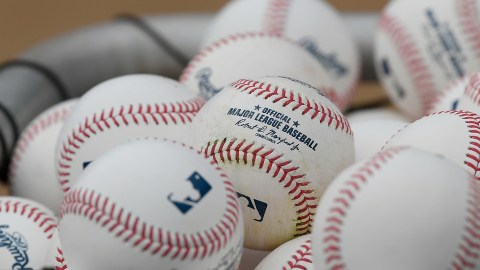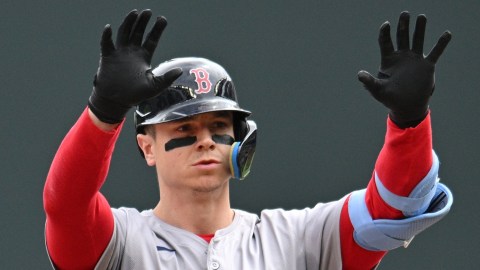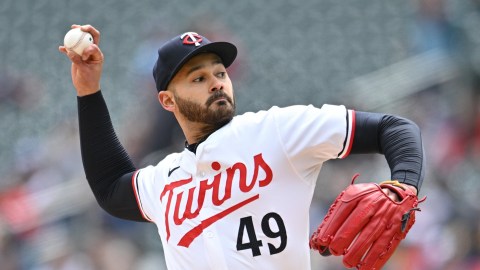There is no doubt that Theo Epstein has done a terrific job as general manager of the Red Sox. He has presided (or generally managed) over two World Series titles and has done a terrific job of reviving the depleted minor league system. However, there is one area where he still has some work to do, and that is shortstop. When you look at Theo’s history with signing shortstops, there is only one grade to give him: E-6.
During the 2004 season, Theo traded Nomar Garciaparra and a low-level prospect for two great defensive players: shortstop Orlando Cabrera and first baseman Doug Mientkiewicz. At the time of the trade, the Sox led the league in unearned runs allowed. Clearly, those runs were not all Nomar’s fault, but he also was not a great defensive shortstop. That is why Theo decided to make the trade. After all, the first rule of winning a title is “defense wins championships.”
Everyone knows how this trade turned out. The Sox went on to break the Curse of the Bambino, winning the World Series for the first time in 86 years. Nomar, meanwhile, has struggled through a seemingly endless array of injuries since leaving the Sox.
This is where the shortstop ride gets a little bumpy for Epstein. When Cabrera left in free agency following the 2004 season, one would think Theo would have learned from this trade and signed another defensive-oriented shortstop. Instead, he did the complete opposite and signed Edgar Renteria, a player who, from 1998 to 2004, committed more errors per game than Nomar.
The Red Sox signed Renteria to a four-year deal worth $40 million. He was brought in to provide offensive support (why else would you sign a below average defensive player to a large contract?). That season Renteria was decent with the bat and bad with the glove. Bad may be an understatement, as he led the league with 30 errors. He never seemed to fit in with the Sox, and the fans got on him all season for making so many errors.
In retrospect, you can’t really blame Renteria for his defensive woes. Sure, you can blame him for the errors, but it’s not as if he was a Gold Glove winner before he came to Boston If you sign an offensive player, you are going to get an offensive player. It’s not Renteria’s fault that the fans expected a better defensive player. That’s just not his game.
Epstein managed to take very little criticism from the fans and media for this signing. It’s easy to see why, as the euphoria from the 2004 World Series was still very much alive.
Not wanting to go through another season with Renteria at short, Epstein decided to trade him to the Atlanta Braves for third base prospect Andy Marte. The Sox also ended up paying $11 million of Renteria’s remaining contract. The deal wasn’t all bad though, as the Sox used Marte as the centerpiece of a deal that brought Coco Crisp to Boston.
In 2005, Epstein went the short money route, signing Alex Gonzalez, a long time Florida Marlin who was known for his glove work. This one-year, $3 million deal worked out terrific for the Sox. Not only did Gonzalez provide amazing defense, but he was also serviceable with the bat, hitting .255 with a .299 on-base percentage.
This is the moment when Theo made a poor decision. He had already tried signing an expensive, offensive shortstop in Renteria, and that did not work. However, he had also seen two defense shortstops (Cabrera and Gonzalez) perform well. At this point he should have realized that signing a poor defensive player was not the way to go. Unfortunately, Theo decided to sign Julio Lugo, a player known as a bad defensive shortstop.
It is easy to understand what Epstein was thinking. He saw Lugo as a decent offensive player who would hopefully provide adequate defense. The problem was that Lugo had always been known as a bad defensive shortstop. Renteria was a good offensive shortstop and a bad defensive one. Lugo was just an average offensive shortstop and a bad defensive one. The four-year, $36 million deal did not make sense from day one.
Here’s a quick rundown of the Sox shortstop numbers the past few seasons:
2005 – Renteria ($8 million): .276 BA, .335 OBP, 8 HR, 70 RBI, .385 SLG, bad D
2006 – Gonzalez ($3 million): .255 BA, .299 OBP, 9 HR, 50 RBI, .397 SLG, great D
2007 – Lugo ($8.25 million): .237 BA, .294 OBP, 8 HR, 73 RBI, .349 SLG, poor D
2008 – Lugo ($9.25 million): After committing 16 errors in only 81 games, Lugo got hurt and lost his starting job to Jed Lowrie.
The Sox will run with Lowrie and Nick Green for the rest of the season. That’s fine for now, but neither of these players are really long term solutions. They are solid backups, but neither should be full-time shortstops for a championship team.
In the offseason, Theo and the Sox are going to find themselves in the same position they were in after the 2004 and 2006 seasons, without a defined shortstop. The team can win without a good one, as they did with Lugo in 2007, but they could use a full-time solution.
The Sox always have money to spend, but just because they can spend $8 million a year for a shortstop, doesn’t mean they have to. There just aren’t that many great shortstops out there.
Not surprisingly, the 2010 shortstop free-agent pool looks weak. Names like Bobby Crosby, Adam Everett and Khalil Greene aren’t going to get anyone in Boston very excited. What the Sox definitely do not need to do is sign another offensive shortstop. The Pirates Jack Wilson, a free agent this summer, is probably a step down from Lugo. Don’t be fooled if anyone sings his praises. Signing a player like Wilson to big money is the worst thing the Sox could do.
Shortstop is such an important position defensively that teams should really put a premium on that skill. Yet, teams still pay shortstops based on offensive production. The reasoning is that there are so few good offensive shortstops, that you need to pay a lot to get one, but there is a flip side to that. Since the average shortstop is not a great offensive player, and the position is critical defensively, doesn’t it makes more sense to have a player who is great with the glove?
In recent years, an average starting shortstop bats about .280. Would you rather have someone who hits .300 and is a below-average defender, or someone who bats .250 and is a terrific defender? What if the player batting .300 was making $8 million per season and the one hitting .250 was making $3 million?
There is a stat that estimates how many runs a specific player contributes called “runs created" (thank you Bill James). It is much more difficult to try and estimate how many runs a great defensive player saves. When it comes to balls hit into play, no position on the diamond is more important than shortstop. Besides catcher, there is no other position that benefits as much from having a great defensive player as compared to an average one. Hopefully Epstein remembers this when it comes time to sign a shortstop this offseason.



